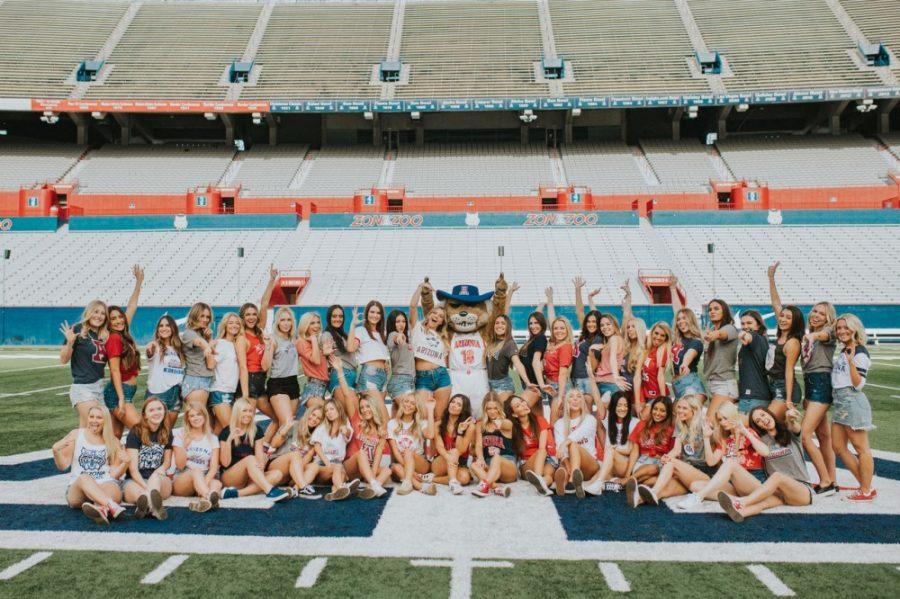Senior years goes by in a flash, and as graduation nears, grad photographers spend their days capturing the last few weeks of it.
The busy season, when photographers service the most students, starts around mid-April and lasts throughout the month.
RELATED: Commencement Spotlight: Senior Graduation Caps
“All seasons have pros and cons” said Jimmy Song, a UA alum who started working a photographer his sophomore year at UA “I love grad season because I still have a lot of friends in college who are graduating, so it’s amazing seeing them graduate, as well as be able to take their pictures.”
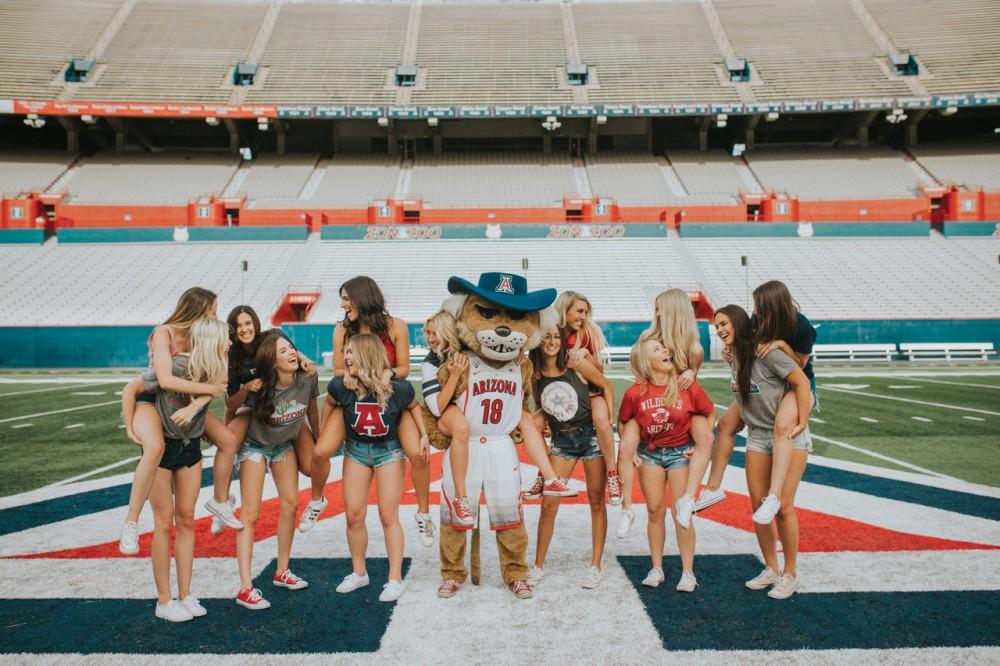
The spring graduation season is busier than the fall season. Requests from seniors generally start coming in around March, however many people ask earlier than that. Song already has shoots set up for Spring 2019.
Other students wait until later to book. “I’ve had inquiries up the week of graduation,” said Jacquelynn Buck, a boutique photographer. Buck has also photographed students who waited until after graduation to take their pictures.

Each photographer varies in the number of clients they can take on each year. Some, like Buck, are selective with the number of clients and may take as few as five. Others, like Song, can shoot for over 90 students during the spring season.
When approached, the photographers go over price, location, date and ideas with the clients. Speaking with clients beforehand helps make the shoot itself go smoother and allows photographers to understand exactly what each student wants.
“When I work with people I try to make lessons fun…” Buck said. “So I spend a lot of time talking with my clients about what they want.”
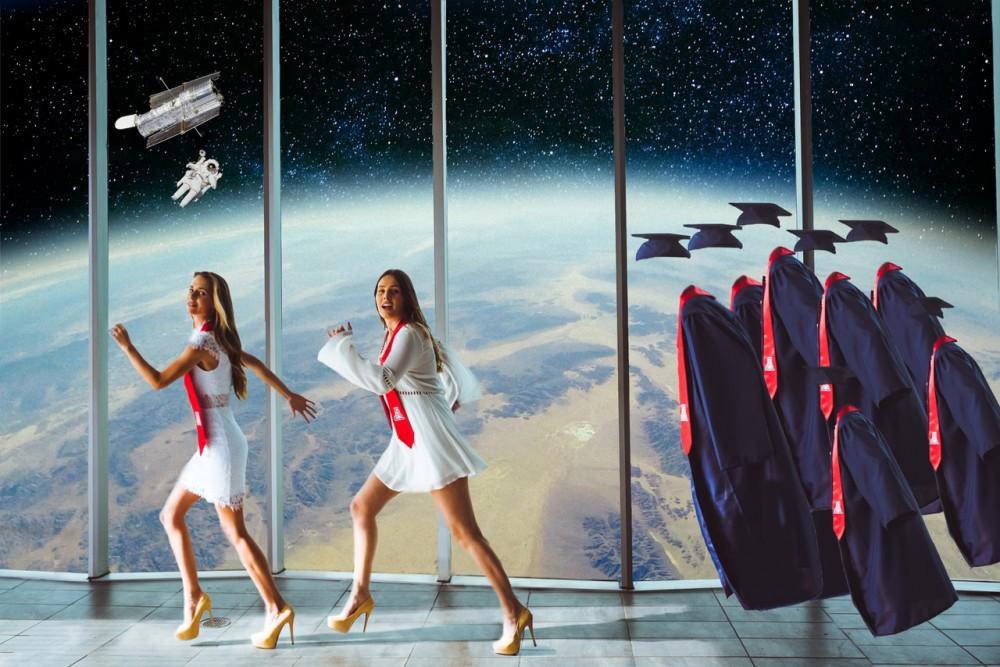
Photographers also inform the client what to expect during the shoot so they understand exactly what they’re getting.
“I tell them… what to expect in the session because a lot of people haven’t done a session since high school or they may have never done one at all before,” said Michael Chansley, a professional photographer for over 10 years.
On the day of the shoot itself, photographers start preparing early in the day, before they meet with the students. Photographers have to check that they have backup camera batteries and all camera gear, as well as fully charged cameras.
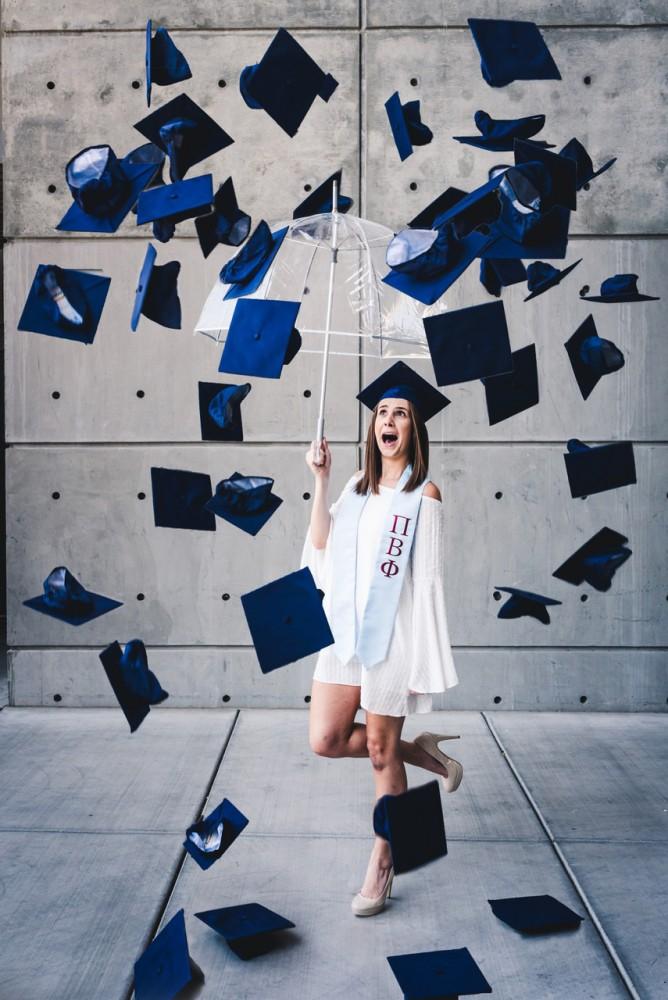
“My session really starts a couple hours before a photo session even starts because I have to prep for everything,” Chansley said.
Depending on their schedule, photographers may have a shoot in the morning, near sunrise, and in the afternoon, near sunset. Sessions are generally around an hour in length.
The photographer and student meet at their first location and the shoot begins. The most popular first location is Old Main, but from there subsequent locations depend on the student’s preferences.
Many students choose to take photos near buildings that correspond to their department. Student athletes often take photos in, or near, stadiums and fields.
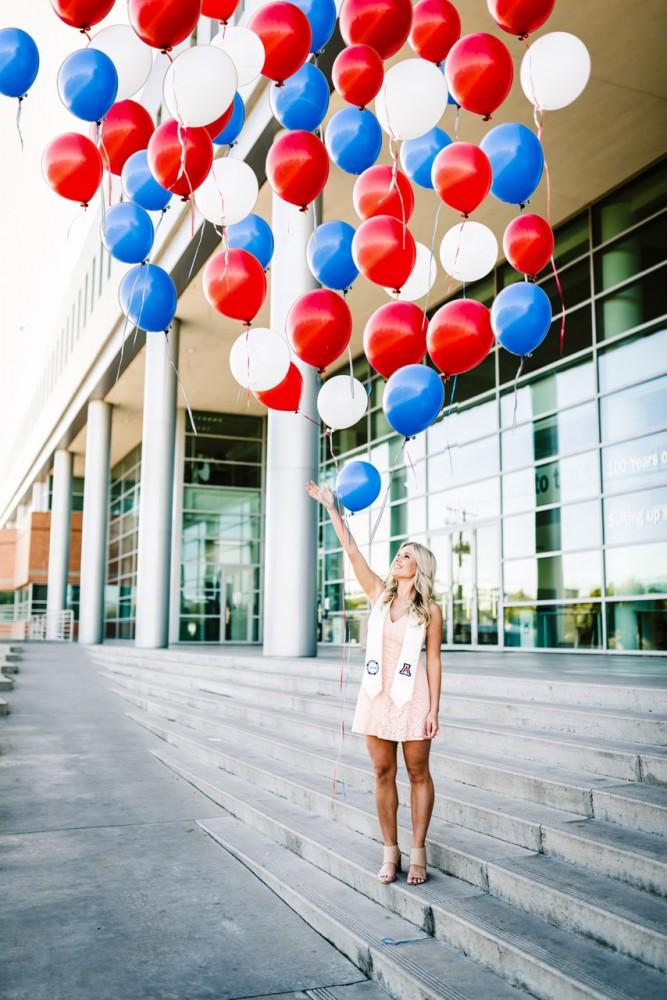
Not all students change outfits during their shoots. The ones who do sometimes have to get daring if no building is open for them to change in.
“Sometimes they’ll change in the middle of the campus” Buck said. “They’ll find a bush and jump behind the bush to change clothes.”
If the client wants a group photo, such as some shots with their friends or sorority sisters, that is usually saved for the end of the session. Occasionally a more unique guest makes an appearance.
“I’ve had a few people bring Wilbur along during a photo shoot, so I kind of got to fanboy a little bit…” Song said.
After the shoot, photographers go back to their studios to edit the photos. Once they’re done, students are able to view them either in person at the studio or online in a proofing gallery.
RELATED: A handful of sparkles? Not the brightest idea
Occasionally clients become emotional after seeing their photos, physical evidence of years of academic work and personal sacrifices.
Buck described one nontraditional student who was a single mom who had taken her daughter with her to all her classes. She was the first person in her family to graduate college.
“I remember that she actually cried [when she saw the photos] because she was explaining to me her journey,” Buck said. “Telling me how in a way she was really proud of herself and she really wanted these pictures to be impactful because they were proof that she had done it.”
Follow Vanessa Ontiveros on Twitter



